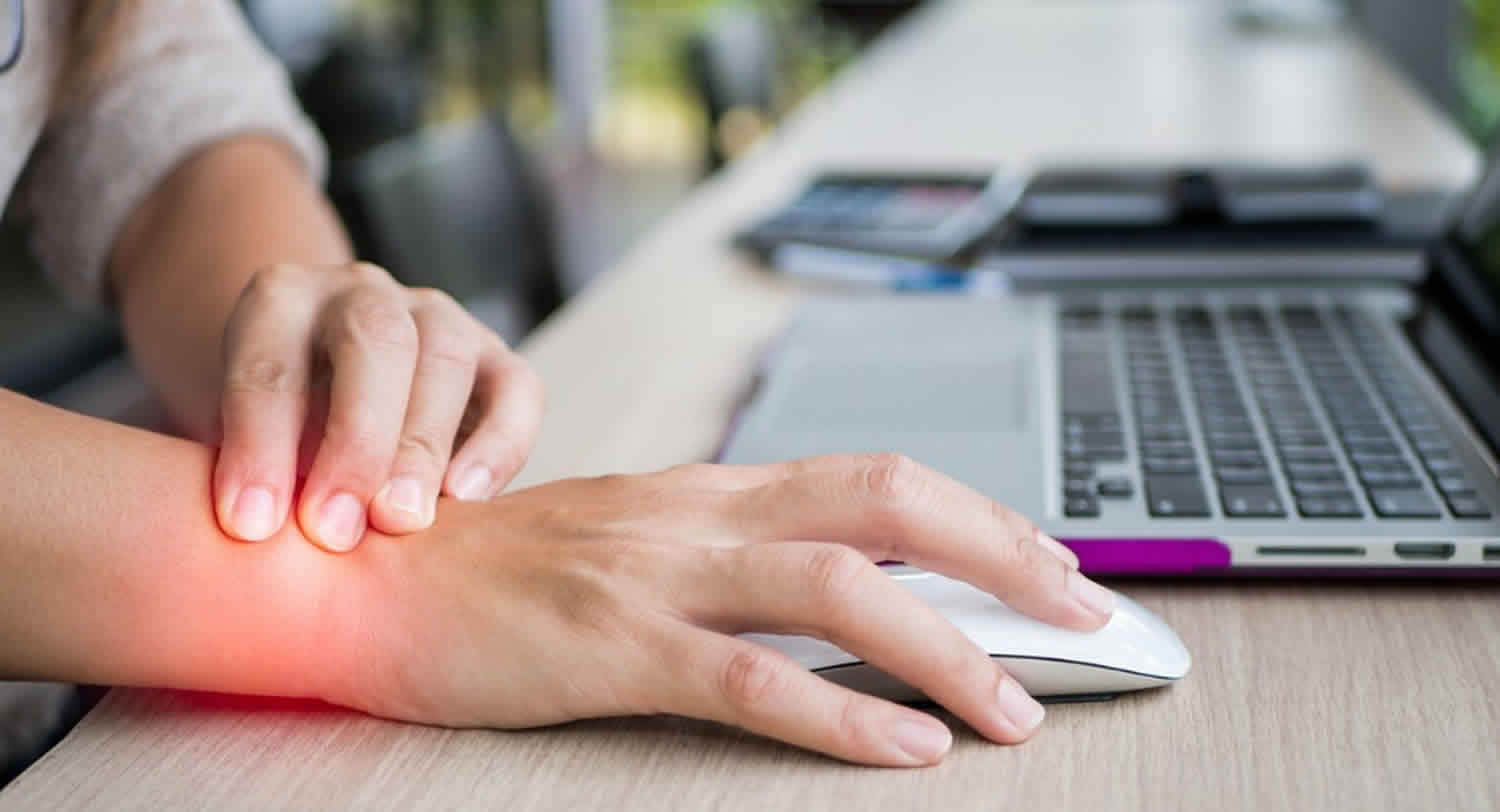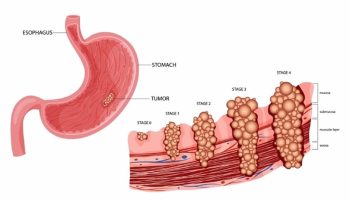Overuse syndrome
Overuse syndrome is another term for a occupational overuse syndrome, cumulative trauma disorder (CTD) or repetitive strain injury (RSI). Overuse syndrome mainly affects those who repeat certain motions over and over again during their daily activities. Overuse syndrome is any type of muscle, joint or nerve injury, such as tendinitis or a stress fracture, that’s caused by repetitive trauma. If you’re suffering from overuse syndrome, it will most likely affect your hands and/or arms before any other parts of your body.
There are certain jobs and activities that can cause overuse syndrome, including:
- Working on an assembly line.
- Sewing.
- Playing a musical instrument.
- Working on the computer.
All of these jobs and activities can put a lot of repeated stress on your hands and arms. When you push these body parts to their limit, it often results in overuse syndrome.
A overuse syndrome typically stems from:
- Training errors. Training errors can occur when you take on too much physical activity too quickly. Going too fast, exercising for too long or simply doing too much of one type of activity can strain your muscles and lead to an overuse injury.
- Technique errors. Improper technique also can take its toll on your body. If you use poor form as you do a set of strength training exercises, swing a golf club or throw a baseball, for example, you may overload certain muscles and cause an overuse injury.
Symptoms include swelling, pain and weakness in the affected joints. Vulnerable tendons can be overworked and inflamed by repetitious manual tasks such as working on a keyboard, working on an assembly line or even playing a musical instrument.
If you think you are developing overuse syndrome symptoms, tell your manager. In consultation with your occupational health and safety officer you can devise ways to change and improve work practices and workspace design.
See your doctor for treatment, advice and referral.
Rest is usually the best cure. Sometimes poor workspace design or work practices contribute to occupational overuse syndrome. Making minor changes can alleviate or prevent overuse syndrome.
Can overuse syndrome cause arthritis?
There’s no known link between overuse syndrome and arthritis, though overuse syndrome can lead to some other ailments, including:
- Tendinitis.
- De Quervain’s tenosynovitis (irritation in the wrist and thumb tendons).
- Stenosing tenosynovitis (swollen flexor tendons).
- Capsulitis (inflamed ligaments).
- A muscle or tendon strain.
Overuse syndrome causes
Occupational overuse syndrome is a type of overuse injury, caused by repetitive movement, constant muscle contraction or straining, forceful movements, or awkward postures in a work environment causing soft tissue injury without sufficient recovery time. In other words, the rate of injury exceeds the rate of healing in the tissue. The greater and/or the more sustained the forces involved in a repetitive activity, the greater the chance of developing an overuse injury. Jobs that can lead to occupational overuse syndrome include office work (eg: keyboard use), manual work (eg: lifting and carrying heavy items), and process work (eg: working on an assembly line or a supermarket checkout).
Overuse injuries can also result from recreational activities that involve repetitive and/or high-intensity movements, such as practicing a musical instrument or training for a particular sport or other type of physical activity.
Specific factors or conditions that can lead to overuse injuries developing include:
- Awkward or constricted postures
- Repetitive movement
- Prolonged muscle tension
- Forceful holding or movement
- Vibration, especially over long periods.
- Poor design or arrangement of equipment and furniture (ergonomics)
- Poor work practices eg: poor time management, poor work techniques, lack of training
- Psychosocial factors eg: excessive workload, tight deadlines, an uninspiring social and work environment.
Starting a new physical activity or intensifying a current training routine can increase the risk of an overuse injury. This is usually due to training errors (eg: too much activity too quickly) and/or technique errors (eg: poor form when doing strength training exercise or swinging a tennis racket).
Overuse syndrome high-risk jobs
Any manual task that requires fast and repetitive movements or working in fixed or awkward postures for long periods of time can trigger overuse syndrome. Anyone who works with their hands, such as hairdressers, musicians and mail workers, can experience overuse syndrome.
Occupations at risk include:
- office work – such as typing and clerical duties
- process work – such as assembly line and packing
- piece work – such as sewing
- manual work – such as bricklaying and carpentry.
Risk factors in developing overuse syndrome
Workplace design and work practices can contribute to overuse syndrome. Risk factors can include:
- furniture, tools or equipment that don’t conform comfortably to the body
- benches or workstations that are too high, too low or too far from the body
- machinery that operates too quickly for user comfort, such as speedy conveyor belts that force the worker to move fast
- workspace design that requires repeated bending, stretching or twisting
- tight deadlines that prevent workers from taking sufficient breaks
- repetitive manual tasks.
Overuse syndrome prevention
Making changes to the design of a workplace and workplace practices, and using adjustable furniture can reduce the risk of overuse syndrome.
The following approaches play an important role in the prevention of overuse injuries in general:
- Stop activity when you feel discomfort
- Maintain correct posture
- Use proper equipment
- Gradually increase activity levels
- Cross-train to avoid overloading a particular muscle group
- Maintain a good level of general fitness
- Maintain a healthy balanced diet
- Manage stress levels
- Don’t smoke
- Avoid prolonged, repetitive movement or activity
- Educate yourself about overuse injury prevention.
If occupational overuse syndrome, or any other type of overuse injury, is suspected, is it important to seek early treatment to prevent the condition progressing.
Your doctor will likely tell you to rest any areas where you feel pain more often, while also recommending more conditioning:
- Conditioning: Athletes typically utilize this method when they’re training, but you don’t have to be a top-notch athlete to use it. Think of yourself as an athlete. Warm up your most-used muscles before the day begins with different stretching exercises. During the day, if you need to, take breaks to rest and stretch again after excessive use of your hands and arms.
- Gradually relaxing your muscles: When you get home from work, don’t stop using your hands and arms altogether. Think about marathon runners: They always cool down following a grueling race. You should do the same with your over-worked muscles. A runner will usually walk for a few minutes following a race. Similarly, if you repeat your stretching exercises, rather than resting your hands and arms, it can help prevent the muscles from tightening up once you’ve finished using them for the day.
If you want to prevent the symptoms of overuse syndrome from coming back, you need to be aware of the early warning signs. This means resting when necessary and taking the proper precautions when you start to feel any sort of discomfort.
Changes to workplace design
Suggestions include:
- Use ergonomically designed furniture and equipment.
- Rearrange the workspace to keep everything needed within easy reach.
- Keep benches at waist height, so that shoulders can relax and arms can bend gently at the elbows.
Changes to work practices
Suggestions include:
- Schedule work to include frequent breaks.
- Vary tasks so that repetitive hand movements are alternated with other work.
- Set realistic deadlines.
Adjusting furniture to suit your body
Keyboard operators and typists are commonly at risk of developing overuse syndrome. Furniture, such as chairs and desks, should be adjusted to suit the dimensions of the individual and support good posture.
Suggestions include:
- Adjust the height of your chair until your elbows are level with the keyboard.
- Use a chair with a lumbar (lower back) support.
- Keep document holders next to the computer screen, at the same viewing distance.
- Use a footstool to raise the level of your knees slightly higher than your hips, if you cannot make adjustments to your desk and chair.
- Locate the mouse close to the keyboard and use a mouse pad.
- When possible use regular-sized computers instead of smaller laptops.
Overuse syndrome symptoms
Occupational overuse syndrome is usually associated with repetitive hand movements such as typing, but any part of the body can be affected. Overuse syndrome can affect the tendons and muscles of the fingers, hands, wrists, elbows, shoulders, back and neck.
Overuse syndrome symptoms vary, depending on the individual, the site of injury and the severity of the condition. At the beginning, your arms and hands will just feel tired and fatigued, which you may think is normal. Then, you may begin to feel musculoskeletal pain, meaning pain in your muscles, bones, ligaments, tendons and nerves. If it continues to get worse, you could be dealing with microtrauma, which occurs when small parts of your soft tissue begin to tear. Eventually, your muscles and tissues will experience more and more trauma, resulting in pain and loss of use.
Common overuse syndrome symptoms may include:
- pain
- muscle weakness
- swelling
- numbness
- restricted mobility of the joint
- gradual loss of the ability to move your hands and/or arms like you once could.
It is not possible to ‘work through’ overuse syndrome. Initially the pain and stiffness may be slight and only noticeable while the particular manual task is performed. If these symptoms are ignored the discomfort will escalate until the joints, muscles and tendons are painful even when at rest.
Overuse syndrome diagnosis
Your doctor will begin by asking you a series of questions about your symptoms, history of symptoms and medical history. After that, they’ll put you through a physical exam to test your arm/hand strength, before determining whether there’s any nerve damage or irritation.
During the physical exam, your doctor will check for swelling, points of tenderness and passive and active range of motion (ROM). The location and intensity of your pain can help determine the extent and nature of the damage. Tenderness and guarding are often present. Crepitus, either painful or painless, is often found during the ROM examination. Obvious erythema, swelling, and anatomic derangement raise the possibility of an acute injury or infection, as well as the presence of an inflammatory disease 1.
In more severe injuries, where the muscle or tendon has been completely ruptured, your doctor may be able to see or feel a defect in the area of injury. Ultrasound often can help distinguish among several different types of soft tissue injuries.
Imaging studies
The diagnosis of most overuse injuries does not require imaging studies. However, if surgical intervention is considered, imaging studies are vital for the decision-making process.
Radiography
Bony avulsions are relatively common among people who participate in dance, athletic activity, and heavy physical labor. Radiography is useful for defining these bony avulsions.
Stress fractures; calcification of tendons, which occurs in persons with chronic tendonitis; joint mice; myositis ossificans; heterotopic ossification; and atrophy of cartilage generally are revealed with radiography.
Bone scanning
This may reveal stress fractures that are not evident on radiographs.
Magnetic resonance imaging (MRI)
Typically, MRI is more effective for acute injuries; findings are generally more subtle with chronic injuries.
MRI is increasingly effective for revealing the site of nerve compression when large nerves are involved (eg, ulnar, median, sciatic), but it is not yet definitive for smaller nerves. Its true sensitivity is still being determined for these uses.
MRI has been quite successful in revealing tendon, ligament, and muscle injuries. It is easily available, does not involve radiation, and can help to assess chronicity of soft-tissue injuries.
The presence of bone marrow edema on MRI scans may precede visualization of stress fractures of the cortical bone and indicates trauma to the trabecular portions of the bone.
Banks and colleagues 2 published a review of MRI findings in athletes’ overuse injuries.
Ultrasonography
In the hands of a skilled clinician, ultrasound can be a quick and effective method in the clinic to assess for fluid collections, impingements, and/or soft tissue tears associated with many overuse injuries. However, ultrasound typically is not utilized as much in the surgical planning process as the aforementioned imaging modalities.
Laboratory studies
Laboratory tests are rarely contributory to the evaluation of overuse injury, and no laboratory results contribute to the diagnosis of overuse injury. However, several tests are generally ordered during the initial workup to rule out other etiologies of pain, depending on the patient’s presentation, including, but not limited to, the following:
- Erythrocyte sedimentation rate (ESR)
- Rapid plasma reagent testing (RPR)
- Antinuclear antibody testing (ANA)
- C-reactive protein (CRP)
- Complete blood count (CBC)
- Vitamin B12
- Thyroid-stimulating hormone (TSH)
- Comprehensive metabolic panel (CMP)
Electrodiagnostic testing
Electrodiagnostic testing (eg, electromyography (EMG), nerve conduction studies) can be very useful when employed in the appropriate scenarios. In cases of peripheral nerve compression or injury, such testing can provide evidence of the location and severity of the injury. Electromyography (EMG) and nerve conduction studies are not tests with high specificity, although they can provide much-needed information when vague symptoms are the chief complaint. They are also very useful for documenting work-related injuries.
Overuse syndrome treatment
The easiest way to treat overuse syndrome is to stop the activities or motions that trigger your symptoms. Of course, this isn’t always possible since some of these activities are required for a specific job. Relative rest, particularly avoidance of the inciting activity, is a hallmark component of treatment. Using the involved area in nonpainful ways often helps to maintain range of motion (ROM). If you aren’t able to completely cut out these activities, you should try to limit them as much as you can. Total bed rest is virtually never advisable for these patients.
The next step would be following conservative treatment recommended by your healthcare provider. These include:
- Injection (performed by a physician).
- Use of warm/cold modalities, such as contrast baths (alternating between a hot and cold bath).
- Gentle exercise.
- Using a splint (you can either create one yourself or buy one, depending on the area that’s affected).
- Making changes to activities that cause symptoms.
The earlier you begin any of these treatments, after you begin feeling symptoms, the more effective they’ll be. You may also be referred to occupational therapy or physical therapy, where you’ll receive specific recommendations on how to relieve your discomfort, and on how to reduce any future recurrence of these symptoms.
Participation in a carefully planned physical therapy program is important for the following reasons:
- Patient education
- Supervised use of the injured part 3
- Appropriate use of modalities (eg, transcutaneous electrical nerve stimulation units, similar electrical treatments, ultrasound/phonophoresis, iontophoresis, heat/cold)
- Development of a home exercise program
- Psychosocial benefits related to frequent interaction with an active partner in the treatment regimen
In a randomized clinical trial 4, the short- and long-term effect of an exercise training program used for treating adductor-related groin pain in athletes was evaluated. The program had 47 participants who agreed to be interviewed and examined in an 8- to 12-year follow-up. The results found that the exercise program had a long-lasting effect on the participants and is the first time an exercise treatment program for overuse injuries to the musculoskeletal system has had this significant of an outcome 4.
The physical therapy program also offers the patient the chance to see that movement will not lead to ongoing tissue damage, thus preventing significant “sick behaviors” or kinesophobia.
Overuse injury in athletes is commonly caused by ill-fitting equipment (eg, in cycling), overtraining/overreaching (eg, with regard to triathlons, marathons, etc), or technique flaws 5. Specialized bike-fitting is available, sports psychology is worthwhile in combating overtraining, and sport-specific coaching is often invaluable. Coaches, athletes, and physicians must work together to correct these problems and maintain a healthy musculoskeletal system.
Nonsteroidal anti-inflammatory drugs (NSAIDs) are mainstays in the conservative treatment of overuse injuries. However, considerable evidence has been revealed that true inflammation is rarely a component of these disorders, especially tendinopathies. Consequently, the use of simple analgesics has become more prevalent in the treatment of such disorders.
Muscle relaxants, opiates, corticosteroids, tricyclic antidepressants, and sleep medications have a role in the tailored treatment of individuals with overuse injury.
Occupational therapy
Occupational therapists with experience in this field can help to identify workplace modifications. In cases of individuals with disabilities who develop overuse injuries as a result of the interface with adaptive equipment, occupational therapy may be of great benefit. Often, simple modifications in the manner in which the patient performs activities of daily living or modifications in the equipment itself confer relief.
Vocational rehabilitation and work-hardening programs are often effective for bringing motivated patients back into the workforce. Integration of this type of program has proven to be effective in the corporate world and has decreased the overall financial impact of overuse injuries in the workplace.
Medical therapy
Injection of involved structures with combinations of corticosteroids and local anesthetics is frequently quite helpful in persons with overuse injuries. Pain relief enables more effective participation in therapy, and it may help to limit the likelihood that the patient will develop a chronic pain syndrome. In most cases, injections should be performed after less invasive measures fail.
Steroid injections are the most commonly used procedure in the treatment of overuse injuries, although controversy surrounding this treatment is still readily apparent. Tendons and ligaments can become structurally weakened by the use of steroids, predisposing them to rupture. The use of local anesthetics and steroids should be reserved for patients with significant pain who have the ability to change the underlying cause behind their injury. Repeatedly injecting patients who will inevitably return to the same routine that initially caused the injury is not advisable 6.
Many steroid injections can be performed under ultrasonographic guidance to increase accuracy and decrease the possibility of intratendon or intraligament injection.
Rarely, immediate relief of pain may be necessary to allow participation in an athletic or performing arts event, and this can be achieved through injection therapy.
Surgical intervention
Surgical intervention is undertaken if conservative approaches fail and if the injury is amenable to surgery. Decompression of nerves and repair of lax or failed ligaments are the most common overuse injuries that lead to surgery. Surgeries that are performed solely to relieve pain in the absence of objective findings are notorious for suboptimal outcomes.
You will likely have a physical or occupational therapist who can help you recover after the surgery. They’ll teach you some different range of motion exercises that will help you regain normal functionality in either your hand or arms.
When you’re ready, you can start performing strengthening exercises to further improve how your hand and/or arm functions.
Overuse syndrome prognosis
Most people who suffer from overuse syndrome in their hands and arms are able to recover after 3-6 months. However, unless the offending causes are addressed, recurrences are quite common. Patient motivation and commitment to prevention are key to rehabilitating these injuries. Making a small, but significant, lifestyle change, and incorporating helpful stretching exercises, will help relieve pain in your hands and arms and prevent another nagging injury.
Home exercise programs tailored to the individual’s biomechanics are another important facet of treatment.
But if you don’t seek treatment for overuse syndrome, it can lead to permanent injuries, sometimes so severe that you completely lose functionality in the affected area.
Recovery after surgery varies depending on the procedure.
- Battery L, Maffulli N. Inflammation in overuse tendon injuries. Sports Med Arthrosc. 2011 Sep. 19(3):213-7.[
]
- Banks KP, Ly JQ, Beall DP, et al. Overuse injuries of the upper extremity in the competitive athlete: magnetic resonance imaging findings associated with repetitive trauma. Curr Probl Diagn Radiol. 2005 Jul-Aug. 34(4):127-42.[
]
- Meltzer KR, Standley PR. Modeled repetitive motion strain and indirect osteopathic manipulative techniques in regulation of human fibroblast proliferation and interleukin secretion. J Am Osteopath Assoc. 2007 Dec. 107(12):527-36.[
]
- Hölmich P, Nyvold P, Larsen K. Continued significant effect of physical training as treatment for overuse injury: 8- to 12-year outcome of a randomized clinical trial. Am J Sports Med. 2011 Nov. 39(11):2447-51.[
][
]
- Brenner JS,. Overuse injuries, overtraining, and burnout in child and adolescent athletes. Pediatrics. 2007 Jun. 119(6):1242-5.[
]
- Cartwright MS, White DL, Demar S, Wiesler ER, Sarlikiotis T, Chloros GD, et al. Median nerve changes following steroid injection for carpal tunnel syndrome. Muscle Nerve. 2011 Jul. 44(1):25-9.[
]





